Competition for Talent Remains Fierce,
So Develop a Thoughtful Hiring Plan for 2023 Now
America’s talent war continues, with an unemployment rate is 3.5% and an astounding 10.1 million job openings, according to the latest report from the Bureau of Labor Statistics.
Although half of the employers surveyed recently by pwc said they plan to streamline their workforce in the coming year, finding and retaining quality talent remains a top concern among corporate decision-makers.
Competition for talent (especially passive talent) remains fierce, so a recruitment roadmap for 2023 is a must.
Start by considering the positions that need to be filled and the approach for hiring them.
In addition:
- Build out your budget and anticipate your headcount beginning with the open positions you will need to fill in the first quarter of the year. Keep in mind that you’ll want to start the recruitment process now for January new hires. As part of the budgeting process, create a clearly defined compensation plan with the salary range for open positions before the start of the job search. Be sure to note any wiggle room in the starting salaries and be mindful of pay transparency laws that require employers to disclose salary ranges for open positions.
- Meet with your recruitment partners – internally and externally – to discuss hiring needs, niche roles and candidate qualifications. Identify recruiters with expertise, experience and networks in key industries where you may mine for talent and collectively agree upon ways to maximize the skills and resources of the team.
- Create a recruitment plan with diversity, equity and inclusion in mind. Ensure that the minimum qualifications for the job opening align with your company’s DEI policies. In addition, indicate whether progressive career growth can serve as a substitute for an undergraduate or advanced degree.
- Shore up your brand. This is critical, as an estimated 86% of job candidates research the organization and its reputation before they consider applying for an open position. Before embarking on recruitment, audit your company, taking note of the good and the bad. Solidify your company’s brand identity and look for ways to enhance the brand experience for employees. Identify your firm’s unique selling proposition and why someone would want to join the firm. Be sure to gauge your company’s online reputation, too, by sifting through reviews on Glassdoor and other online resources. Strategize ways to address any potential issues, as this will help not only attract talent but retain valuable employees, as well.
- Review your company’s benefits package, keeping in mind what’s most important to candidates – culture, flexibility and an opportunity for advancement, among other things.
- Create a promotions plan to help sell the positions to potential candidates. Think about what employees are seeking from companies and what your firm is doing to find and retain the best people. Then craft compelling messages and determine the best ways to reach prospects, whether through a posting on the company website, social media or other channels. Complement these efforts with thoughtful and creative communications by your external recruiting partner.
- Remember that, for now, candidates are in the driver’s seat. How you communicate and the relationship you build with potential new hires could be the difference between them accepting the position – or not.
- Constantly evaluate your recruiting strategy. Review what’s working and what’s not, and alter your approach as needed. There’s no need to look out the entire year; a quarter-by-quarter plan is best, considering the evolving workplace.
Amid a changing economy, the talent shortage is well-documented. Still, finding the next great hire can be made easier by having a thoughtful recruitment plan in place.


Comments are closed here.